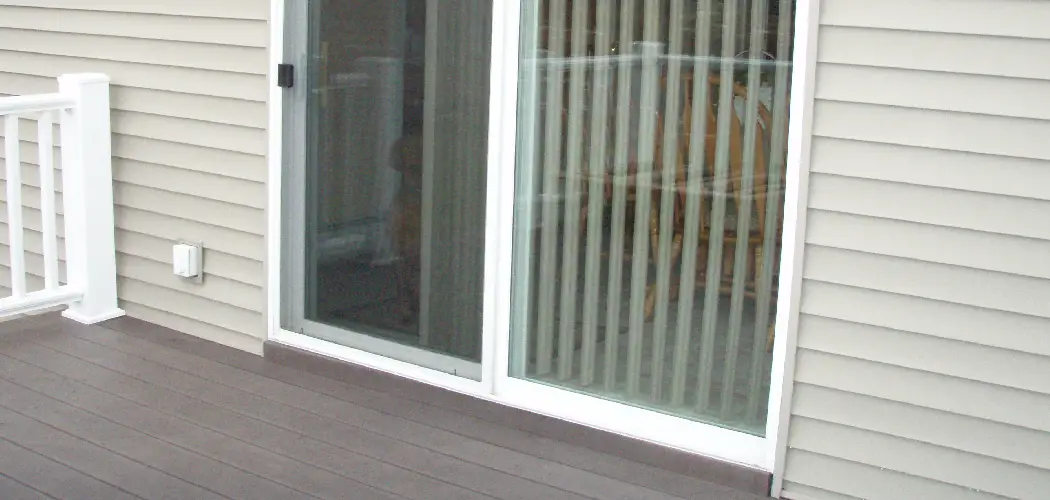Are you noticing rain or wind blowing in from the bottom of your sliding door? If so, it might be time to seal around the door frame. Sealing a sliding door helps protect your home against moisture, drafts, bugs, and other unwanted elements – not to mention saving you energy costs.
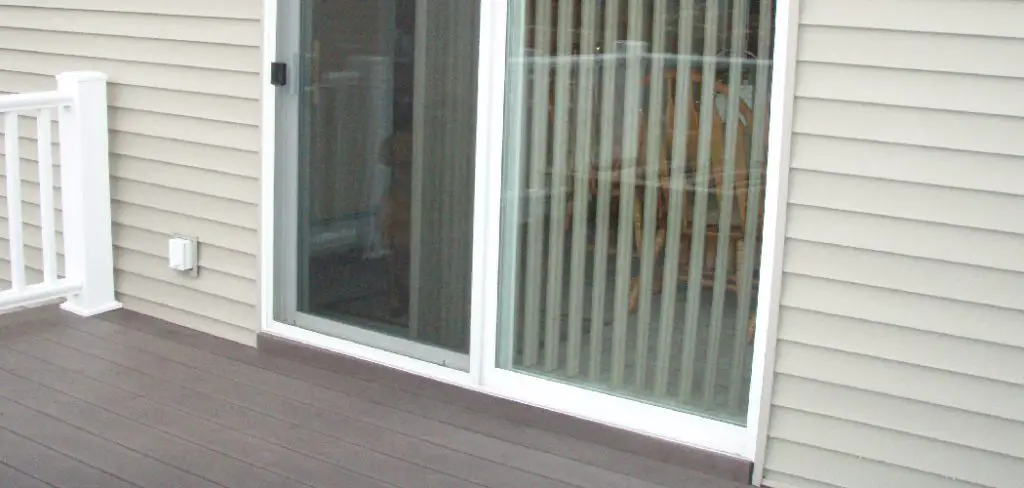
In this blog post, we’ll explore how to seal under sliding doors with easy-to-follow steps, tools, and materials needed for success!
Tools and materials you will need to seal under sliding doors
- Tape measure
- Pencil/ marker
- Level
- Utility knife or razor blade
- Marker to label the door frame
- Caulk gun
- Acrylic latex caulk, preferably in a clear color
- Foam weatherstripping tape (optional)
Step by Step Guidelines on How to Seal Under Sliding Doors
Step 1: Measure and mark
Begin by measuring the area around the door frame to see how much caulk you will need. Use a pencil or marker to draw a line where the new seal will be placed, as well as label each section of the door frame so they can be identified later. Measuring and marking are important steps to ensure that you have the correct amount of caulk for the job.
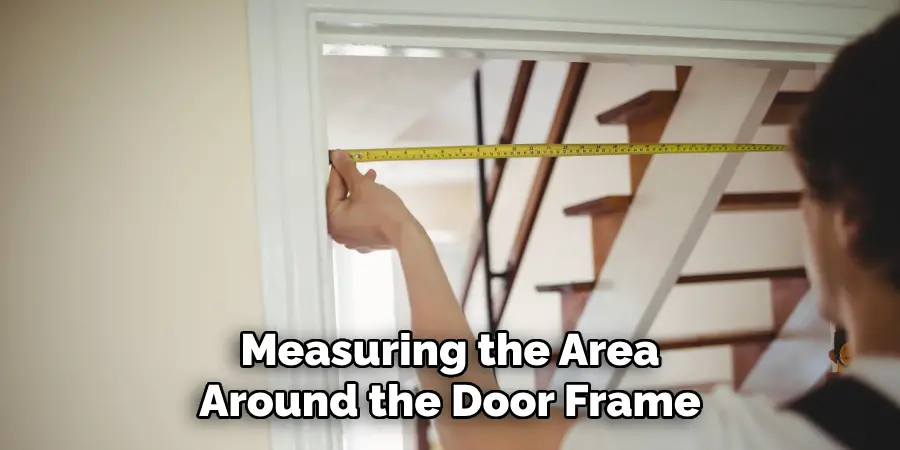
Step 2: Preparing the area
Carefully remove any dirt, debris, or old caulk from around the door frame. Make sure to use a razor blade or utility knife if there are any stubborn pieces of old caulk. Using a damp cloth, wipe the area clean to ensure that there is nothing left behind. While preparing the area, also check to see if you need to replace any weatherstripping tape.
Step 3: Apply the caulk
Using a caulk gun, load up your tube of acrylic latex caulk and apply it along the line you drew as well as any gaps between the door frame and wall. Start at one end and work your way down to the other. Take your time and make sure that you are applying the caulk evenly and in a straight line. Applying the caulk in a circular or S-shape will help ensure better adhesion.
Step 4: Use foam weatherstripping (optional)
In addition to caulk, you may want to use foam weatherstripping tape for extra insulation. This will help keep out drafts, dust, and bugs. Start by measuring the length of the weatherstripping you need, then use a utility knife to cut it to size. Peel off the backing and press it into place along the bottom of the door frame.
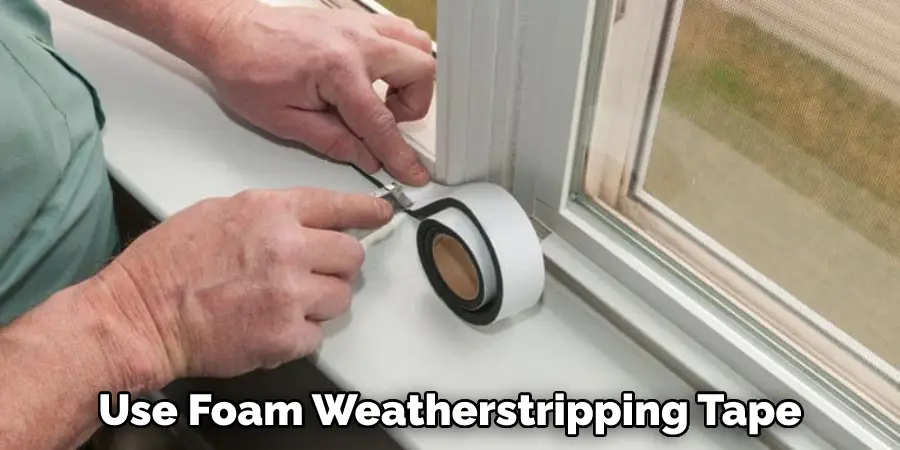
Step 5: Let the caulk dry
Once all of the caulk is applied and any additional weatherstripping is in place, wait for the caulk to dry completely. This should take about an hour or two. Drying caulk is important to ensure that it will adhere properly and provide a durable seal.
Step 6: Test your door seal
Once everything is dry, open and close the door a few times to make sure the seal is secure. If you notice any cracks or gaps in the seal, apply some more caulk and let it dry. Make sure the door is easy to open and close before you call it a day.
Now that you know how to seal under sliding doors, get out there and start sealing! With these easy steps, your home will be much more secure from the elements in no time. Good luck!
Additional Tips and Tricks to Seal Under Sliding Doors
1. Check the bottom of your door for any dust or debris that might impede a good seal. Vacuum and clean it thoroughly before starting to prevent dirt from getting into your seals.
2. For interior doors, use a self-adhesive weather-stripping material to provide an airtight seal between the floor and the door. This is a fast and easy way to keep the cold out and warm air in.
3. For exterior doors, use a foam or brush seal strip that fits around the door frame to provide an impenetrable barrier from drafts.
4. Look for any gaps between the door frame and the wall where air can sneak in and out. If you find any, use a caulk or sealant to fill them in.
5. To make sure that your door is completely sealed and draft-free, put your hand near the bottom of the door when it’s closed and try to feel for any air coming through. If you can feel a draft, it’s time to check the seals and apply more weather-stripping material.
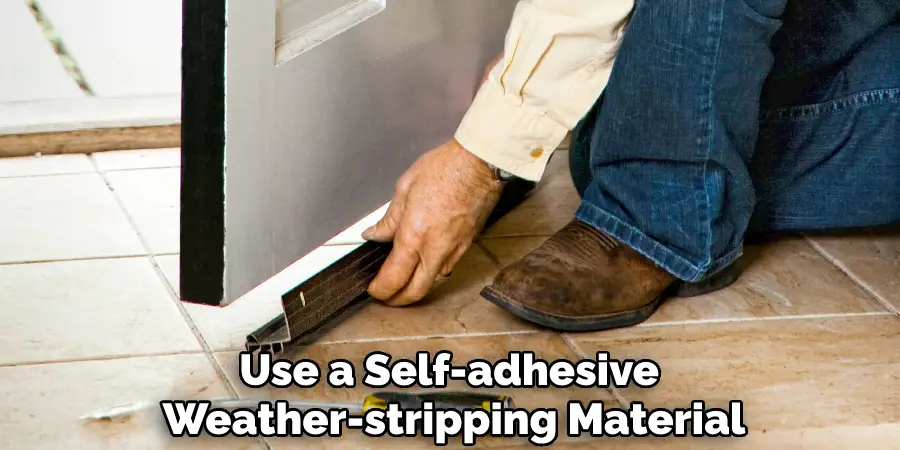
With these tips and tricks, you can ensure that your sliding doors are sealed properly all year round!
Things You Should Consider While Sealing Under Sliding Doors
1. Choose the Right Sealant:
Choose a sealant that is suitable for the material of your door, and make sure that it is resistant to weathering and other environmental factors. If you are installing a rubber seal, make sure that it is formulated to withstand extreme temperatures, such as those found in hot and cold climates. Choosing the right sealant is essential for making sure that your door will stay sealed and protected from outside weather elements.
2. Measure Carefully:
Make sure to measure the space between the bottom of the sliding door and the floor before you purchase a sealant. It is important to remember that some sealants may be too big or too small for the space, so you want to make sure that you get the right size. If you are unsure of how much sealant you need, consult a professional who can help determine the correct amount.
3. Clean and Prepare:
Before applying any sealant, it is important to make sure that the area where you will be applying the sealant is clean and free of dust, dirt, and debris. Vacuum or sweep the area thoroughly, and wipe it down with a damp cloth to get rid of any remaining particles.
4. Apply the Sealant:
When you are ready to apply the sealant, begin at one end of the door, slowly working your way across to the other end. Make sure to follow the instructions of the sealant manufacturer, as some sealants may require a certain number of coats or need to be applied at certain temperatures.
5. Inspect Regularly:
Once you have applied the sealant, make sure to inspect it regularly to ensure that there are no gaps, holes, or tears. If you find any damage to the sealant, replace it immediately to make sure that your door remains protected from outside weather elements.
Following these considerations will help you ensure that the area under your sliding door is properly sealed and protected. No matter what type of sealant you choose, always make sure to follow all of the manufacturer’s instructions to ensure that it is installed correctly and safely.
Frequently Asked Questions
Are There Other Ways To Seal Under Sliding Doors?
Yes. Another popular way to seal under sliding doors is with caulk or silicone sealant. This method requires more skill and creativity as you need to get the sealant into all the cracks and crevices. Start by cleaning and drying the area, then apply a bead of caulk or silicone along the bottom edge of the door frame and seal any gaps between the floor and door frames. To ensure an airtight seal, use your finger to smooth out any excess.
Are There Any Special Considerations When Sealing Under Sliding Doors?
Yes. It is important to ensure that the weather strips or sealant you are using will be durable enough for your climate. In climates with frequent temperature changes or extreme temperatures, it is often best to use a silicone-based sealant as these tend to be more flexible and waterproof.
You should also consider the type of door you are sealing. Wood doors require different types of weatherstrips than metal or vinyl doors, so make sure you choose the right one for your application. Lastly, always follow the manufacturer’s instructions when installing any weather strips or sealant to ensure a long-lasting seal.
Once sealed, how do I maintain a door seal?
Regular maintenance is key to keeping your door seal in good condition. Inspect the weatherstrips or sealant regularly to ensure they are secure and not wearing away. If you notice any gaps or signs of wear and tear, replace them immediately. Additionally, make sure to clean the door frames and tracks regularly with a damp cloth or brush. This will help to prevent dirt and debris from clogging up the edges of the seal, which can cause air leakage.
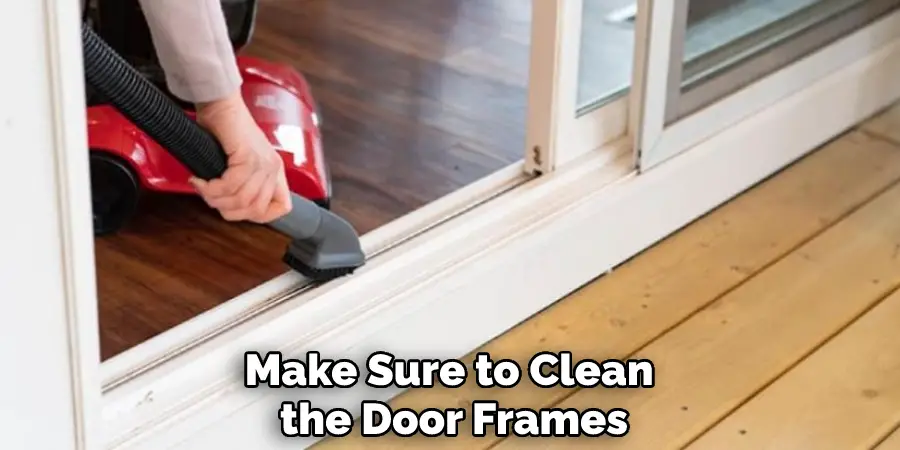
Conclusion
Knowing how to seal under sliding doors is essential for keeping your home energy-efficient and comfortable. Use weatherstrips or a silicone sealant to get an airtight seal, and make sure to inspect the door seals regularly to ensure they are in good condition. With proper care and maintenance, you can keep your sliding doors sealed tight year-round!
By following the steps above and using the right materials, you can ensure that your sliding doors are sealed tight and airtight. Keep your home comfortable and energy-efficient by taking the time to properly seal under your sliding doors – it will pay off in the long run!

